Natural disasters on their regular visits to the State not only spawn pervasive fear and uncertainty among the affected populace but also trigger many other consequences which are unprecedented and unparalleled–they decimate the socio-economic fabric of the State; impoverish a vast section of the population in dealing a deadly blow to the economy, and even alter the political leadership found inept in managing them.
The ugly face of the nature manifested in the form of catastrophic events is not a recent phenomenon; it has been continuing through different phases of the evolution of the habitation known as ‘Udra’, ‘Utkal’, ‘Kalinga’, ‘Orissa’ and ‘Odisha’.
As life starts limping back to normalcy on the heels of a specific disaster and the victims despite being gnarled by poverty induced by it muster courage with their indomitable spirit to stand on their own feet, another disaster befall them, and dips them into absolute poverty, even in the presence of a plethora of schemes and programmes targeting their economic uplift.
Since my childhood I have been hearing about various disasters that visited the State at different points of time. The first one was the 1971 Rajnagar cyclone which battered a single sub-division of the State, namely Kendrapara and killed more than 10,000 people and countless animals. The hair-raising experiences of the victims as aired in All India Radio, which remained the most used mass-communication medium at that time are still fresh in my mind. The most terrifying experience was my encounter with a rare disaster called tornado that affected eleven villages of Keonjhar and erstwhile Cuttack districts. It literally annihilated a revenue village named Puruna Bandha Goda. Besides killing about two hundred humans and more than a thousand domesticated animals, the cataclysmic event unleased hunger, deprivation and pain among the people who escaped its wrath. It exposed the then government’s maladroit handling of the activities that followed the disaster. I distinctly remember the sloppy attitude of the government officials in the rescue operations for which some victims trapped beneath heaps of debris suffocated and some others, although rescued from below the piles of rubbles by the other community-members who survived the disaster succumbed to their injuries due to inordinate delay in rushing them to hospitals. Today, while revisiting the old memories of the tornado I get frightened by the unfortunate scene of burying and burning the blended heaps of deceased humans, dead animals and birds in one place. After two years of the event, I had got a chance of witnessing another tornado in Keonjhar district, which, as the district administration claimed, was managed effectively by rectifying the mistakes committed by it in the Puruna Bandha Goda tornado. I have captured these scenes and my unforgettable memories in a story-form in my book Story of a Tornado in India.
In 1982, the floods in almost all the major rivers of the State inundated hundreds of villages, submerged lakhs of hectres of agricultural land, and swept away some humans and innumerable animals. I have heard horrifying stories of the deluge like hapless victims taking refuge atop big trees; volunteers rescuing people from the fierce river current and the mighty Mahanadi and Devi Rivers begetting new perennial streams over vast swathes of fertile agricultural lands and so on. My book Floods in Orissa is a collection of such stories in different floods of Odisha in the past.
Barring usual depressions in the Bay of Bengal, there was no major cyclone akin to the Rajnagar cyclone of 1971 till 1999. In the latter, a cyclonic storm christened ‘Super Cyclone’ as its wind-speed went beyond the highest speed limit as enshrined in the meteorological literature ripped through 14 coastal districts of the State, and took a heavy toll, the worst hit being Jagatsinghpur which alone recorded the death toll of 10,000. In terms of its impact the Super Cyclone 1999 was considered the deadliest of all the cyclones of the century. Its impact, as far as I remember was far reaching. The disaster underscored with heart breaking clarity how vulnerable Odisha is to the extreme weather that climate change is bringing. In its wake, the people at the helm of affairs of the State weighed far reaching new measures to save lives in future storms. Close on the heels of the cyclone, as per the order of the State government I had shouldered the responsibility of relief operation in a hard-hit tahasil of the worst-hit Jagatsinghpur district. In order to scout out the factors that led to such a horrendous loss and people’s perception to different activities that revolved around the disaster and its management, I conducted a study on six villages of the district and published the findings in book form under the title Beyond Disaster.
My consuming passion for disaster-study provided the main impetus for chronicling the past disasters of this State on my own, all alone, for which I had to frequent to different government offices, archives, meteorological centres and newspaper houses during the last twenty years. While doing so, I have come across some storms which were either deadlier than the Super Cyclone, 1999 or similar to it in terms of their intensity and impact. Since the significance of documentation of such events was glossed over at government and non-government levels, such mammoth cyclones remained undiscovered and hence unstudied. As such every cyclone in recent years, without any academic base has been claimed to be unparalleled and unprecedented in terms of a multitude of events associated with it; its impact on the extent of geographical areas and the socio-economic infrastructure of the affected habitations.
As cyclone, the natural disaster familiar to the denizens has grabbed the lion’s share of the past disasters of the State and solely sapped its economy, I felt it a paramount concern to document some of the deadly cyclones that played a key role in deterring the State’s progress. Accordingly, I made a compilation of such cyclones which laid the basis for my book Cyclones in Orissa.
As regards documentation, my memory dates back to 1987-88 when an initiative was taken by the Congress regime to chronicle the past disasters. Such an academic task was entrusted with a gentleman called Sri Gopinath Das who was having impetus passion for the study of natural disasters. Having worked in the office of the special relief organization at Cuttack for a few days, he had to demit the assignment owing to the lackadaisical attitude of the decision-makers towards this invaluable attempt, which they considered a futile exercise and a burden on the State exchequer.
However, due to a dearth of literature on the disasters of a State where facing such events is an integral part of people’s way of life, the researchers working in this domain find it difficult to delve into the role of administration and others in managing the disasters in the past. Therefore, they have been urging the government for compiling all the past disasters in a formal way so that the files containing them in written form could be saved from a definite ruin in future and people at large would gain knowledge on them and the ways through which the same were effectively as well as unsuccessfully managed by the disaster-managers. The adoption of past techniques that yielded good results would definitely be helpful in managing future disasters and the persistence of bad practices that reflected sordid state of affairs during different disasters could be discarded. But the government’s response to this suggestion was rather tepid.
Of late, however, Hon’ble Chief Minister Sri Naveen Patnaik, has laid stress on documentation of disasters–every aspect involved in the entire process of managing a disaster at institutional as well as individual levels. This call of the Hon’ble Chief Minister shall definitely change people’s assumption that recording of facts and events associated with the management of past disasters is completely a worthless exercise. As I understand, plans are afoot for such exercise.
The present work, ‘Fani: A Summer Cyclone in Odisha’ documents the important activities undertaken during the extremely severe cyclonic storm Fani that ripped through the entire Odisha coast in May 2019.
In conformity with the customary practice of book scripting, I have introduced certain concepts to the readers in the first chapter, ‘Odisha and Cyclone’. It explains the reasons for State’s sensitivity to tropical cyclones, the major one being its close proximity to the Bay of Bengal which tends to be more prone to this disaster than the Arabian Sea. The underlying factors responsible for the differences between the two in terms of their susceptibility to cyclones have been discussed in brief in this chapter. In order to familiarize the readers with the concepts associated with the entire process of cyclone from its formation in the sea to its abatement, a small space has been devoted for lucid explanation of terms like ‘eye’, ‘eye ball’, ‘landfall’, etc in this chapter. Apart from this, the introductory chapter of the book offers knowledge on storm’s intensity, expected damage triggered by it and the process of naming the cyclones- -a recent phenomenon and the reasons associated with such naming.
The second chapter of the book, as per the connotation of its title ‘Forecast’ deals with the process of prediction of the cyclonic event; the key stumbling block to effective forecast; the untiring efforts of the IMD to make forecast and warning pin pointed and so on. Owing to the present work’s main focus on the cyclone Fani, the forecast made by the IMD and other agencies in the context of this summer cyclone, a rare phenomenon has been narrated in detail, date-wise in this chapter.
Notwithstanding the prediction with regard to the timing of Fani’s landfall which was changing from time to time, the forecast was accurate and specific. The dissemination of warning through different modes ranging from the public address system to text-messages was excellent, perfect and timely. As a result of this, the State government was capable of managing the disaster more efficiently which brought laurels to it from different quarters.
It is true we cannot stall or prevent the manifold manifestations of nature, both good and bad. Nature’s fury is always beyond our challenge and the best we can do is to face it in a planned way so that the loss stemmed from it could be minimized. In view of this, the major task before the humans is to escape its wrath by rushing to places where they can take refuge safely. However, the availability of required number of safe places eases the fear of succumbing to the nature’s unkindness, but in case the number of evacuees outweighs the bearing capacity of the available shelters it compounds the apprehension of the threat to their life. In 1971, the people who could get accommodated in 25 cyclone shelters constructed by Indian Red Cross were the lucky ones to save their lives from a gigantic cyclone that killed more than 10,000 people in a single sub-division called Kendrapara (now, a district) of the State. Although the need for erecting such cyclone shelters and safe cyclone resilient structures was felt at that time, the resource crunch faced by the then government restrained it from taking the initiative. It was worrying that the issue was brushed aside by the successive governments for which the dearth of such safe places contributed largely to the casualties in the Super Cyclone, 1999. This time, the government took it as a challenge and constructed a good number of multi-purpose cyclone shelters and school-cum-cyclone shelters across the coastal Odisha with the funds from the Chief Minister’s Relief Fund, World Bank and other agencies (NGOs and other State governments). As I found, these structures were of immense help to the people during cyclones in different years following the 1999 Super Cyclone. In the wake of the forecast of cyclone Fani, about 16 lakh people were evacuated from the low-lying vulnerable areas of 10 districts to such safe structures. This was unprecedented and unparalleled; it was considered the largest human evacuation in the history of mankind before the onset of any disaster so far. The State government won praise globally for accomplishing such a herculean task. The process of evacuation coupled with other preparatory activities undertaken by different agencies, especially by the State and the Union governments including the three Services has been discussed in detail in chapter no.3. All the departments of the State government, the administrations of the districts and civic bodies which were likely to be affected like Puri, Khurda, Cuttack, Jagatsinghpur and Kendrapara and Bhubanswar and Cuttack had taken precautionary measures to face the impending disaster in order to minimize the losses triggered by it. The fishermen communities living close to the sea, apprehended to be the first target of the cyclone were advised not to venture into sea and the boats owned by them were brought ashore. The train and air services were brought to a grinding halt and all the port activities were stalled. Against the backdrop of the severe impact of the previous cyclones including Super Cyclone on Paradip, the preparation made by the Port Trust, the Paradip Municipality and some industries has been placed in the book. I have tried my level best to accommodate all these preparatory measures in a dedicated space of this chapter.
The cyclone Fani, after making landfall at a place between Satapada and Puri put up an unnerving display of tornadoes and rain in different parts of the State. Besides Puri and Khurda districts, it pounded on two major cities, namely Cuttack and Bhubaneswar while marching northeastward, towards north of Kolkata. I have tried to portray the cyclone’s impact on these areas as per the victims’ narration while the catastrophe was raging on and their experience in its aftermath. Instead of conforming to the conventional way of scribing ‘what happened where’, I have tried to mention the scenario in the aftermath of the catastrophe in a descriptive manner in chapter no. 4, ‘Touching Land: thereafter’. It appeared that, the affected areas due to disruption to the road-communication rooted in road blockade by fallen trees and cyclone-debris were out of bounds for outsiders for many days. The incredible winds stripped almost all the trees and the kutcha houses off the areas where they stood before. The villages and towns that came in the grip of the cyclone were seen wearing a deserted look. Although reports of sea water- ingress into habitations were not received, vast swathes of country side were inundated. Almost all the trees falling on the track of the cyclone were either uprooted or half-broken, thereby impacting the greenery of the coastal Odisha to a great extent. Alongside it, the cyclone’s effect on tourism, including eco-tourism has been portrayed in this chapter.
Any report on damage assessment bereft of statistical figures looks incomplete and inaccurate. Therefore, I have borrowed many figures on damages triggered by the cyclone Fani from different sources which have been placed in chapter no.5 under the title ‘Damage Caused’. It was observed that the cyclonic storm had not spared a single sector of the community at large. In order to make a spot assessment of the damage, a central team comprising officers of various departments visited the State twice. The proceedings of their meetings with some affected people and the government officers have been put in a nutshell in this chapter.
Chapter no.6 focuses attention on relief activities undertaken post cyclone Fani. It was seen that unlike Super Cyclone, a very limited number of NGOs hurried to the affected areas along with various items needed immediately by the victims at that point of time. It could be attributed to less coverage of the impact of the cyclone in national and international media. However, the government’s prompt opening of free kitchens on the heels of the disaster was greatly appreciated. The timely distribution of relief items as per Odisha Relief Code and in accordance with the relief package announced by the Chief Minister was acclaimed by the UN and some other international organizations. Despite it, some defects as usual were noticed in the relief operation, especially in distribution of polythene sheets. It was due to dearth of this essential item or identification of the proper beneficiaries. The issue, although has been continuing through all the cyclones that followed the Super Cyclone, 1999 could have been sorted out with proper planning.
Chapter no.7 of the present book has been devoted to the aid and services that poured in from around the country and abroad for meeting the challenges of relief and rehabilitation. But, as compared to the Super Cyclone, the total number of donor agencies in cyclone Fani was very small. Since there was no list of such organizations available either at government or non-government level, I had to rely on the reports published in different newspapers on the donations made by such outfits within a few months of the disaster. Added to that, I have mentioned the names of some organizations which appeared on the internet appealing to the international community to extend financial help to the victims through them.
Since restoration of the community is a lengthy process involving multiple activities, I have concentrated on a specific period; say three months after the cyclone Fani. Thus, the works revolving around reconstruction of the community from the rubbles and restoration of the livelihoods of the hapless victims within this period find place in chapter no. 8 of the book.
I have witnessed a good number of people doing commendable jobs during different phases of various disasters that visited the State. Since their faces did not appear in media, they remained unrecognized and their untiring efforts went unrewarded. However, I have tried to describe the efforts of such persons in chapter no.9 of this book. Although few, I sincerely believe these role models would influence the present generation and the posterity.
During the relief operation of the cyclonic storm Fani, allegations of irregularities in selection of beneficiaries, distribution of relief items and favoritism were leveled against relief-officers in different parts of the affected areas. As a mark of protest, people were seen resorting to road blockades and strikes. Likewise, against the disruption to power supply, a large number of people including women were found protesting in front of the offices of the electricity department at different places. Some of these protests have been portrayed in chapter no.10 of the present work.
Contrary to the convention, I have named the last chapter of the book (Chapter-11) as ‘Lessons Learnt’ instead of ‘Conclusion’. The summarized form of the book along with certain comments of the author is found in the chapter. Departing from the usual practice, I have mentioned here very significant and unprecedented things which I personally witnessed in the cyclone Fani. I have tried to make a comparison of the state of affairs during the Super Cyclone and the cyclone Fani; and the techniques adopted by the government to mitigate the two cyclones. While concentrating on Fani, I have found that the herculean tasks of evacuation and prompt relief had certainly saved thousands of lives yielding enormous fame for the State. But there were certain things and issues, the handling of which could have made Fani management the best. These issues, I have tried to see from the perspective of a disaster-victim, a disaster-researcher, and an academic, all rolled into one.
In view of the immense significance of documentation, I have offered in the final chapter of the book the suggestion of documenting each and every activity undertaken by different actors involved in the process of disaster management so that the individuals having interest in disaster-study and the people at the helm of affairs would identify the new challenges thrown up by varied disasters, rectify the defects underlying their management, and formulate new plans and programmes for facing them in the offing. Besides it, the posterity would find it easy to gain knowledge on any disaster of their choice from a readymade source without beating the bushes.
Since the present work relies heavily on my interaction with Fani victims at different affected places and access to limited government documents, I had deliberately gone through a minimum number of books relevant to this disaster. Owing to this, the bibliography has obviously been limited to two pages.
Anyway, notwithstanding the size of the book, it can be safely argued that ‘Fani: A Summer Cyclone in Odisha’ is a solid document on a cyclone christened as Fani that battered the entire coastal Odisha in May, 2019.

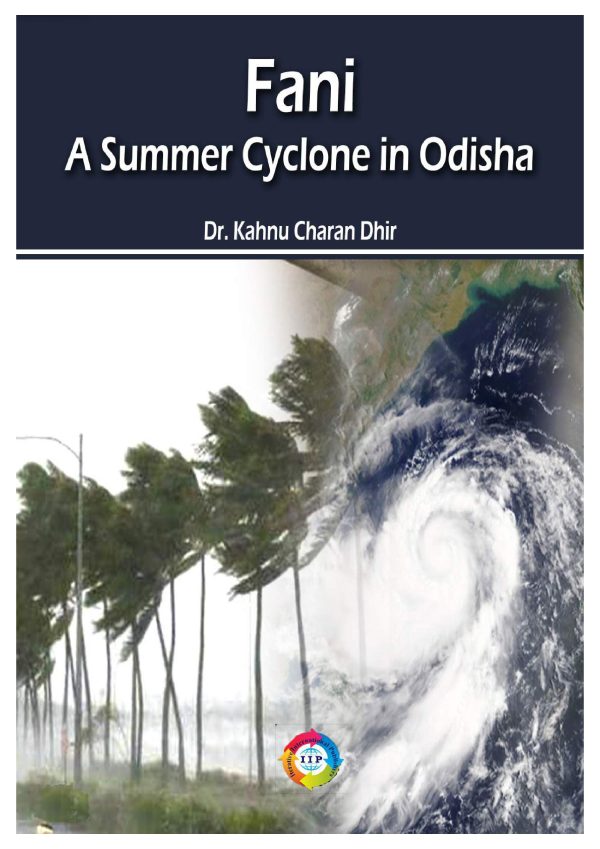
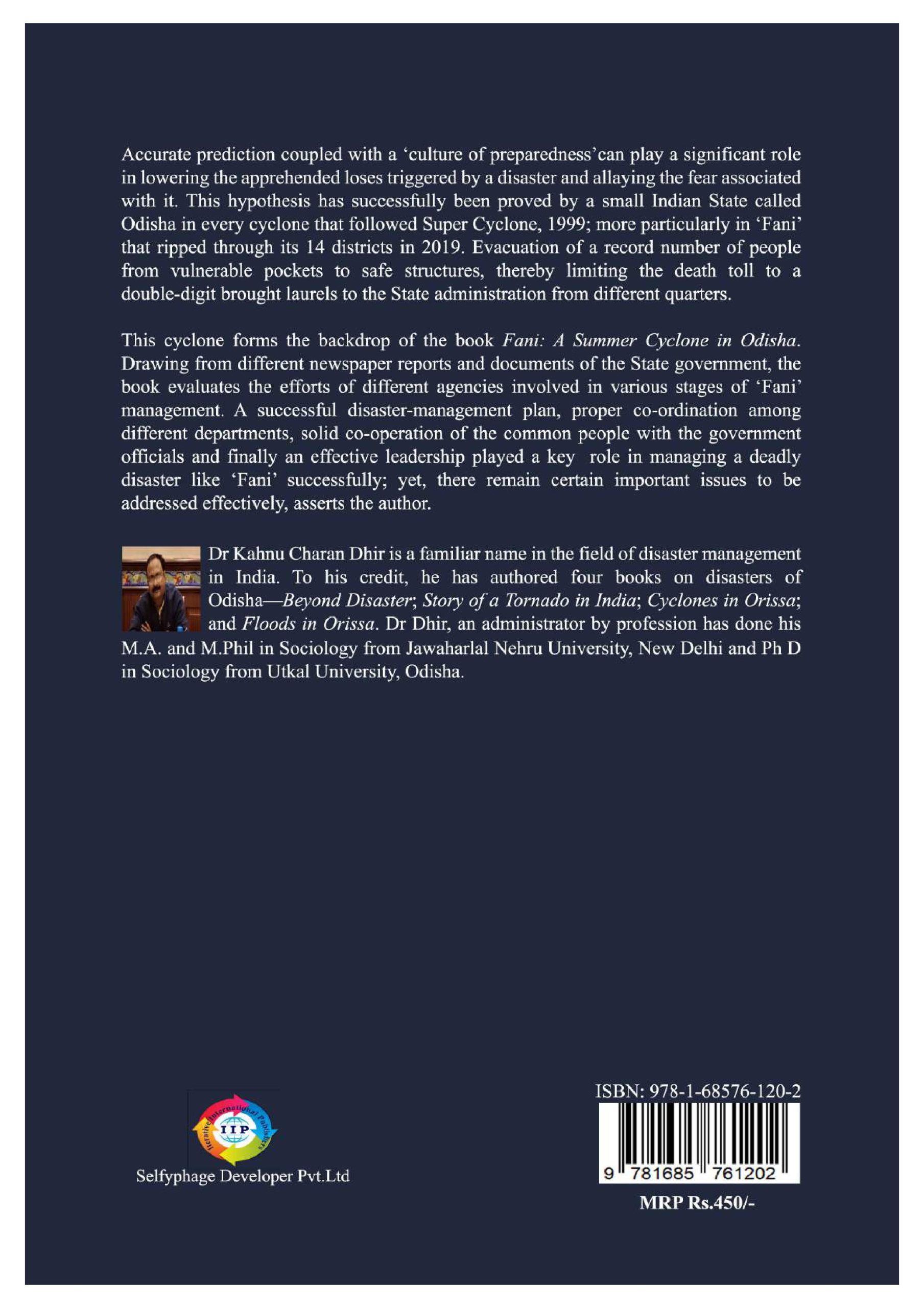
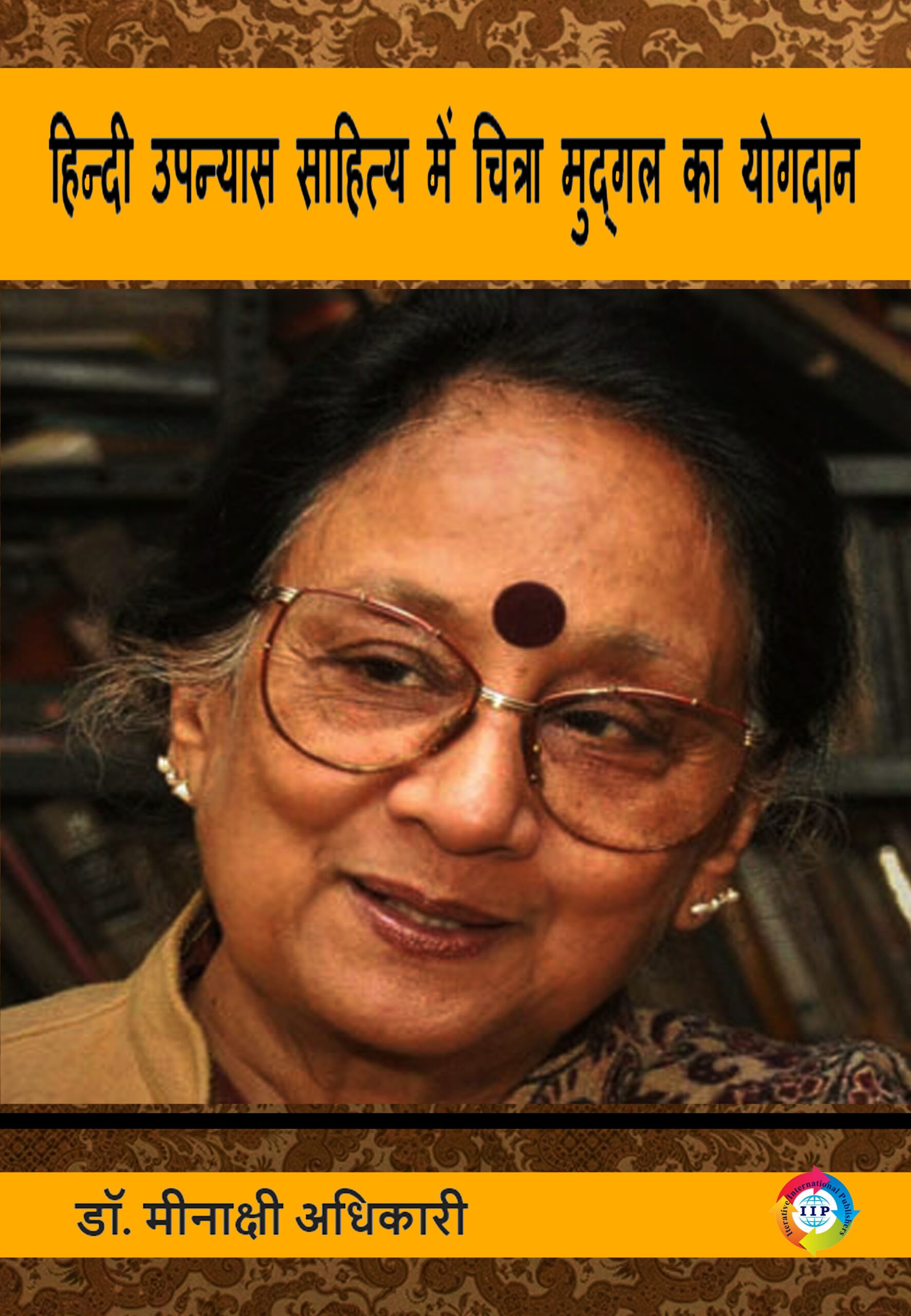

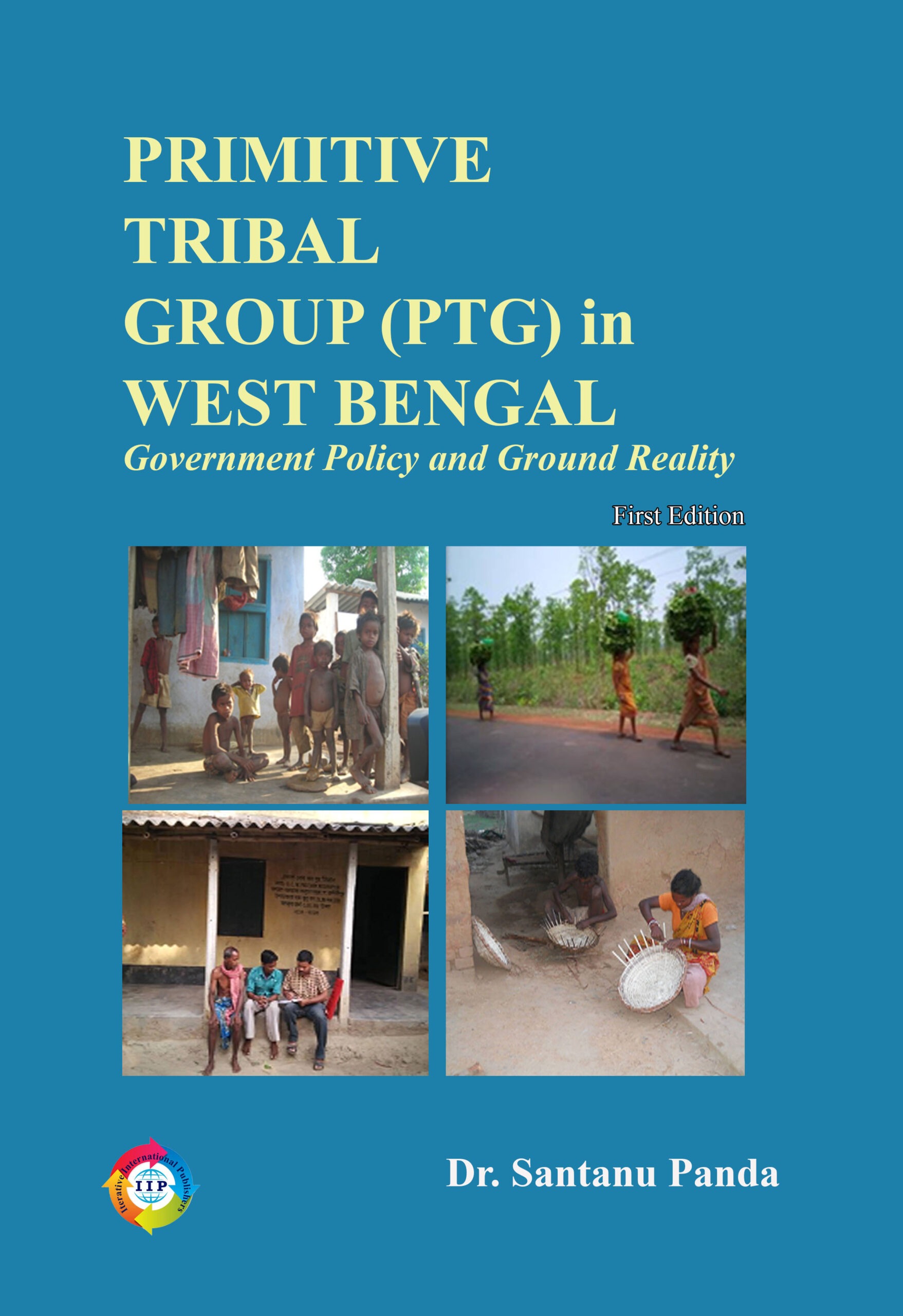
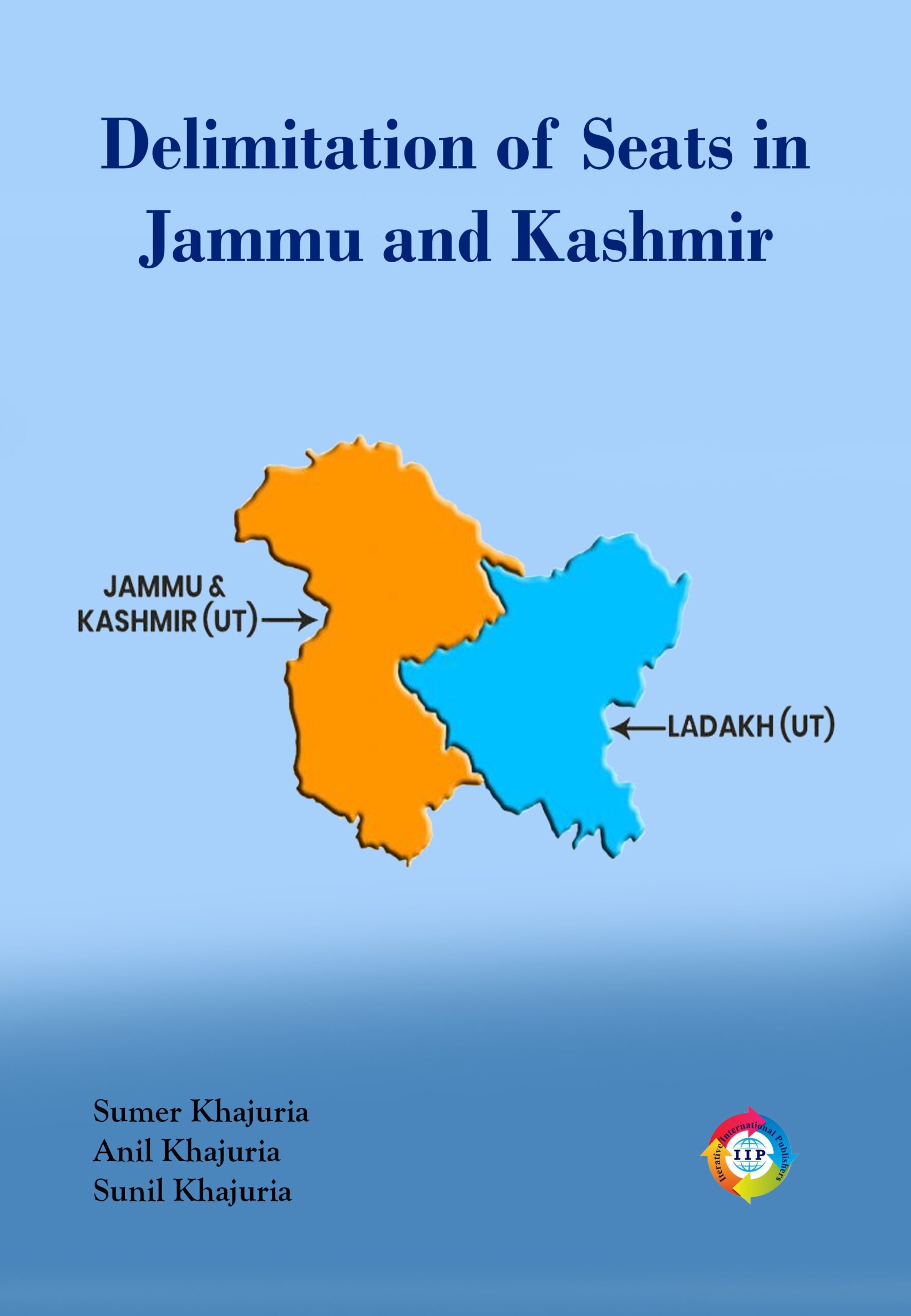
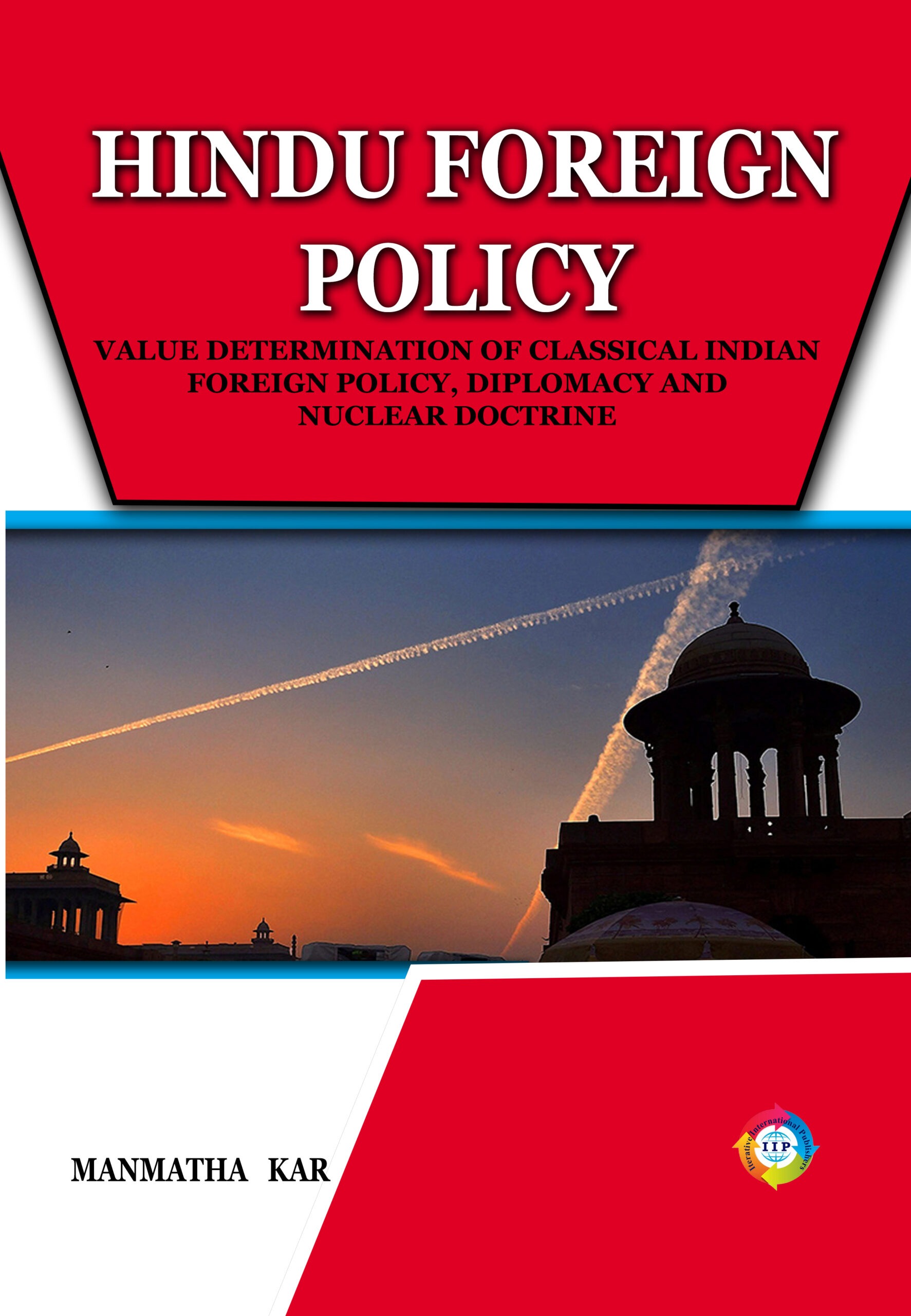
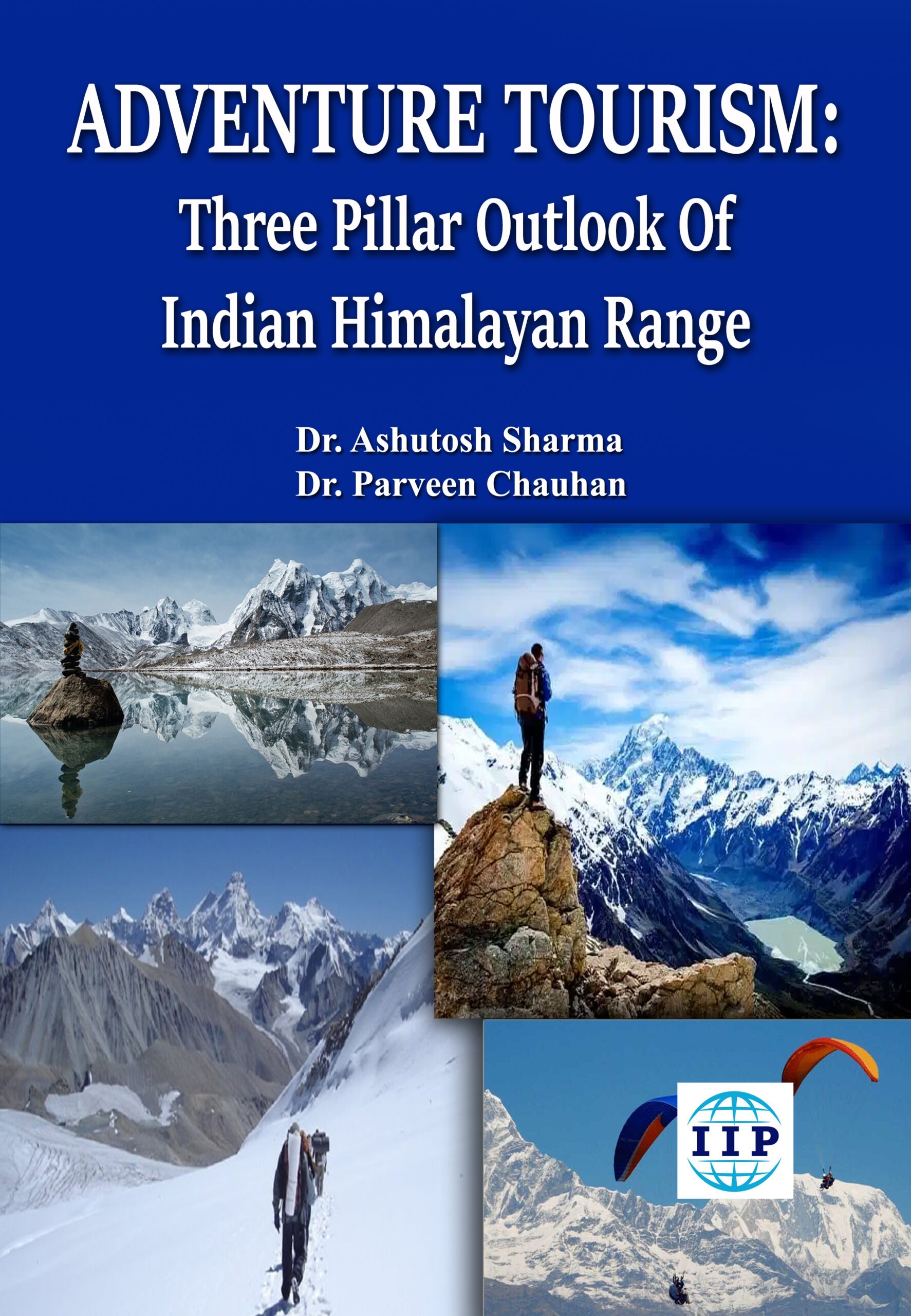
Reviews
There are no reviews yet.